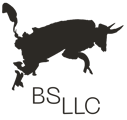Effective inbound marketing strategies to attract, engage, and delight customers.
=utf-8Inbound Marketing and HubSpot's Flywheel Methodology
Inbound marketing is a marketing strategy that focuses on attracting, engaging, and delighting customers by providing valuable content and experiences that address their needs and interests. Unlike traditional outbound marketing, which relies on interruptive tactics such as cold calling, direct mail, and TV ads, inbound marketing uses a range of digital channels and techniques to create a two-way conversation with the target audience.
HubSpot's Flywheel Methodology
HubSpot, a leading provider of inbound marketing software, has developed a flywheel methodology framework, which emphasizes the importance of customer-centricity in inbound marketing. The flywheel methodology consists of three stages: Attract, Engage, and Delight.
-
Attract: The Attract stage focuses on attracting potential customers to your brand by creating and promoting valuable content that addresses their pain points and interests. This can include blog posts, social media content, videos, podcasts, and webinars. The goal is to attract visitors to your website and convert them into leads by offering them something of value, such as an ebook, whitepaper, or newsletter subscription.
-
Engage: The Engage stage focuses on engaging with your leads and nurturing them through the customer journey. This involves using marketing automation tools to send targeted and personalized content to your leads based on their interests and behaviors. This can include email campaigns, lead magnets, and personalized offers. The goal is to build trust and rapport with your leads and help them make an informed decision about your product or service.
-
Delight: The Delight stage focuses on delighting your customers by providing exceptional service and support that exceeds their expectations. This can include personalized onboarding, proactive communication, and exclusive content and resources. The goal is to turn your customers into advocates and promoters who will help you attract more leads and generate more business.
Case Studies from B2B Companies
Let's take a look at some B2B companies that have successfully implemented inbound marketing strategies using HubSpot's flywheel methodology.
Xero
Xero is a cloud-based accounting software company that has used inbound marketing to attract and engage small business owners and accountants. By creating valuable content such as blog posts, webinars, and case studies that address the challenges of small business accounting, Xero has been able to attract a large audience of potential customers. Xero also uses marketing automation tools to nurture their leads through the customer journey, such as sending personalized emails and offers based on their interests and behaviors. By providing exceptional customer service and support, Xero has been able to turn their customers into advocates who refer others to their platform.
Shopify
Shopify is an e-commerce platform that has used inbound marketing to attract and engage entrepreneurs and small business owners who want to sell online. By creating valuable content such as blog posts, webinars, and podcasts that address the challenges of starting and growing an e-commerce business, Shopify has been able to attract a large audience of potential customers. Shopify also uses marketing automation tools to nurture their leads through the customer journey, such as sending personalized emails and offers based on their interests and behaviors. By providing exceptional customer service and support, Shopify has been able to turn their customers into advocates who promote their platform to others.
Customer Journey in Inbound Marketing
The customer journey is a critical aspect of inbound marketing, as it involves understanding the different stages a customer goes through before purchasing. The customer journey typically consists of four stages: Awareness, Consideration, Decision, and Retention.
Awareness
In the Awareness stage, the customer becomes aware of their problem or need and starts looking for information and solutions. At this stage, inbound marketing focuses on creating educational and informative content that addresses the customer's pain points and interests and attracts them to your brand.
Consideration
In the Consideration stage, the customer is actively researching and comparing different options to solve their problem or meet their need. Inbound marketing focuses on providing targeted and personalized content that helps the customer evaluate their options and make an informed decision. This can include case studies, testimonials, and product demos.
Decision
In the Decision stage, the customer is ready to make a purchase and is looking for a solution that meets their specific needs and preferences. Inbound marketing focuses on providing clear and compelling information about your product or service, such as pricing, features, and benefits, and providing a smooth and frictionless buying experience.
Retention
In the Retention stage, the customer has made a purchase and is now a customer of your brand. Inbound marketing focuses on providing exceptional service and support that exceeds the customer's expectations and helps them achieve their goals. This can include personalized onboarding, proactive communication, and exclusive content and resources.
By understanding the customer journey and using the flywheel methodology, B2B companies can create an inbound marketing strategy that attracts, engages, and delights their customers, generating more business and revenue.
